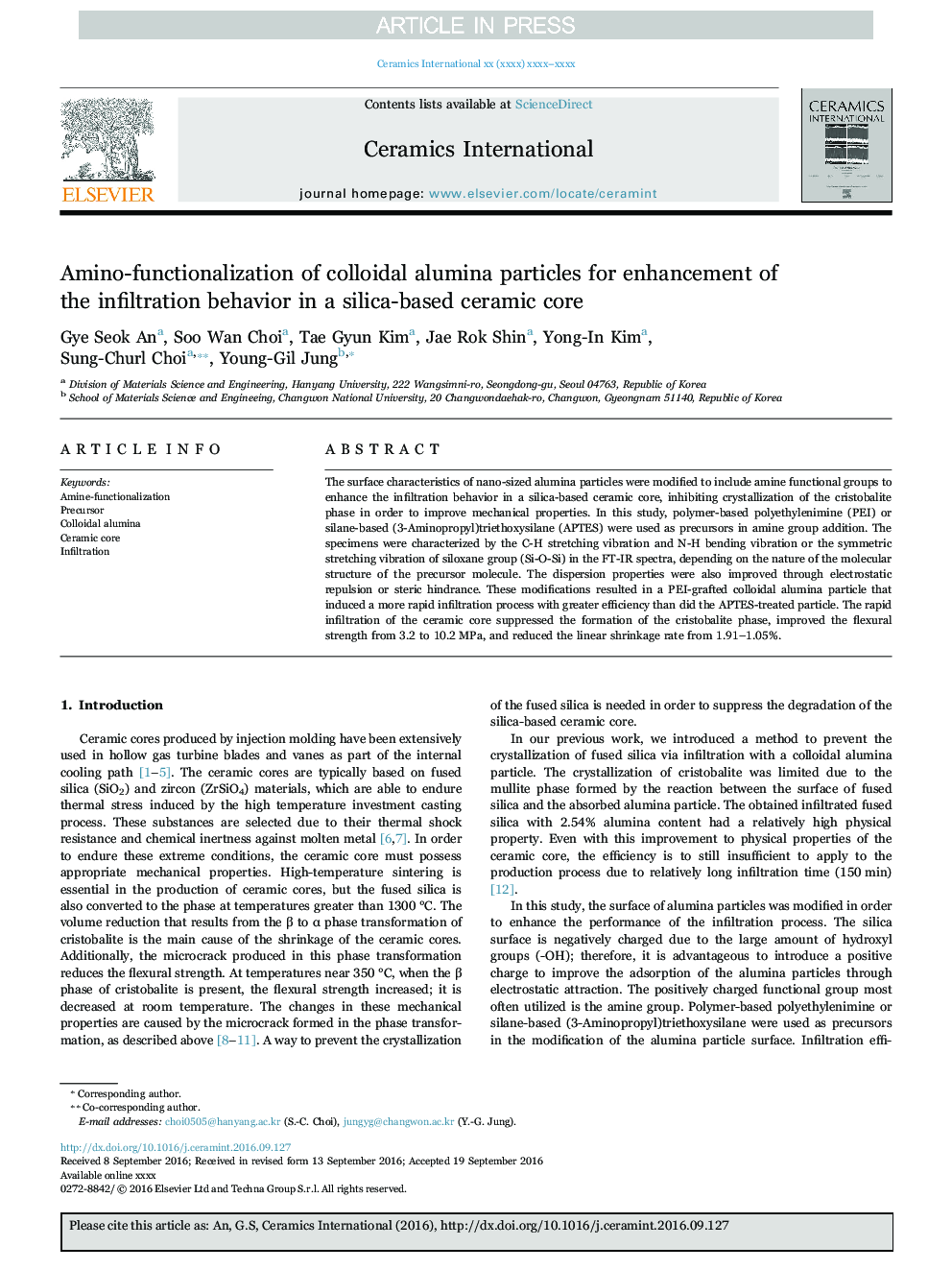| Article ID | Journal | Published Year | Pages | File Type |
|---|---|---|---|---|
| 5438124 | Ceramics International | 2017 | 5 Pages |
Abstract
The surface characteristics of nano-sized alumina particles were modified to include amine functional groups to enhance the infiltration behavior in a silica-based ceramic core, inhibiting crystallization of the cristobalite phase in order to improve mechanical properties. In this study, polymer-based polyethylenimine (PEI) or silane-based (3-Aminopropyl)triethoxysilane (APTES) were used as precursors in amine group addition. The specimens were characterized by the C-H stretching vibration and N-H bending vibration or the symmetric stretching vibration of siloxane group (Si-O-Si) in the FT-IR spectra, depending on the nature of the molecular structure of the precursor molecule. The dispersion properties were also improved through electrostatic repulsion or steric hindrance. These modifications resulted in a PEI-grafted colloidal alumina particle that induced a more rapid infiltration process with greater efficiency than did the APTES-treated particle. The rapid infiltration of the ceramic core suppressed the formation of the cristobalite phase, improved the flexural strength from 3.2 to 10.2Â MPa, and reduced the linear shrinkage rate from 1.91-1.05%.
Related Topics
Physical Sciences and Engineering
Materials Science
Ceramics and Composites
Authors
Gye Seok An, Soo Wan Choi, Tae Gyun Kim, Jae Rok Shin, Yong-In Kim, Sung-Churl Choi, Young-Gil Jung,
